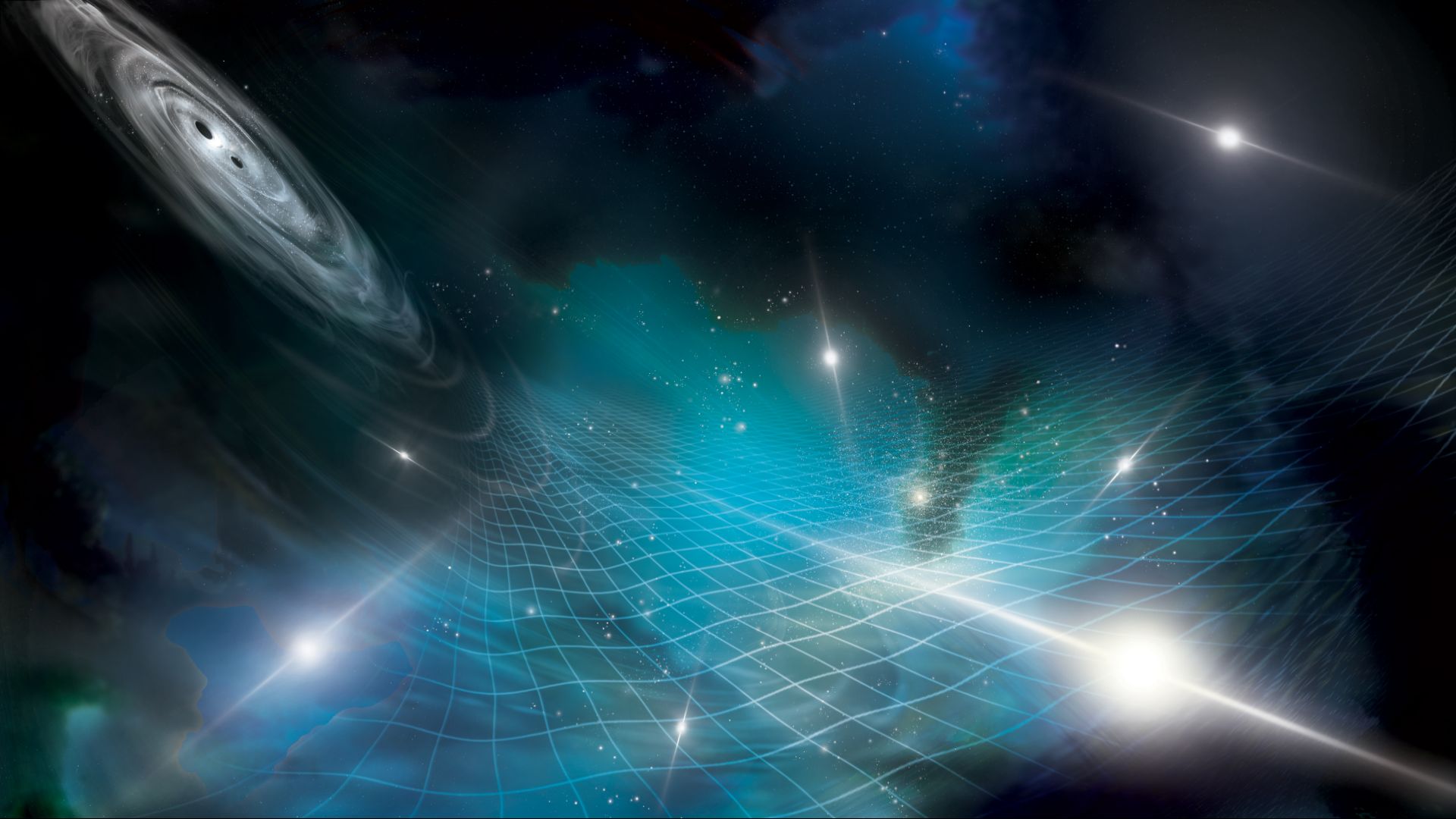
What is the cosmic gravitational wave background? Imagine ripples in a pond, but instead of water, it's space-time itself. These ripples, known as gravitational waves, are caused by massive cosmic events like black hole mergers. The cosmic gravitational wave background is a sea of these waves, created by countless events throughout the universe's history. Think of it as the universe's soundtrack, a faint hum from the distant past. Scientists study this background to learn about the early universe, the formation of galaxies, and even the nature of gravity. It's like tuning into the universe's greatest hits from billions of years ago.
What is the Cosmic Gravitational Wave Background?
The cosmic gravitational wave background (CGWB) is a fascinating concept in astrophysics. It refers to the faint, persistent gravitational waves that fill the universe, much like the cosmic microwave background radiation. These waves are ripples in spacetime caused by massive cosmic events.
-
Gravitational waves are ripples in spacetime. They are produced by cataclysmic events like merging black holes or neutron stars.
-
Albert Einstein predicted gravitational waves. His theory of general relativity, published in 1915, suggested their existence.
-
First direct detection in 2015. LIGO (Laser Interferometer Gravitational-Wave Observatory) made the groundbreaking discovery.
-
Gravitational waves travel at the speed of light. They move through the universe at approximately 299,792 kilometers per second.
-
They carry information about their origins. By studying them, scientists can learn about the events that created them.
How Do We Detect Gravitational Waves?
Detecting gravitational waves is no small feat. It requires highly sensitive equipment and precise measurements.
-
LIGO and Virgo are primary detectors. These observatories use laser interferometry to detect minute changes in distance caused by passing gravitational waves.
-
Detectors are incredibly sensitive. They can measure changes in distance smaller than a proton's diameter.
-
Multiple detectors improve accuracy. Using more than one detector helps pinpoint the source of the waves.
-
Space-based detectors are in development. Projects like LISA (Laser Interferometer Space Antenna) aim to detect waves from space.
-
Pulsar timing arrays also detect waves. They use the regular signals from pulsars to identify disruptions caused by gravitational waves.
Sources of the Cosmic Gravitational Wave Background
The CGWB is generated by various cosmic events, both ancient and ongoing.
-
Merging black holes are major sources. When two black holes collide, they produce powerful gravitational waves.
-
Neutron star collisions also contribute. These dense stellar remnants create waves when they merge.
-
Supernovae explosions generate waves. The death throes of massive stars send ripples through spacetime.
-
Early universe events left imprints. The Big Bang and subsequent cosmic inflation produced primordial gravitational waves.
-
Cosmic strings might create waves. These hypothetical defects in spacetime could generate detectable waves.
Importance of Studying the CGWB
Understanding the CGWB can unlock many secrets about the universe's history and structure.
-
Provides insights into the early universe. Studying primordial waves helps scientists understand the universe's infancy.
-
Tests general relativity. Observing gravitational waves allows for testing Einstein's theory under extreme conditions.
-
Reveals hidden cosmic events. Some events, like black hole mergers, are invisible in other wavelengths but detectable through gravitational waves.
-
Helps map the universe's structure. Gravitational waves can provide information about the distribution of massive objects.
-
Aids in understanding dark matter and energy. Gravitational waves might offer clues about these mysterious components of the universe.
Challenges in Detecting the CGWB
Despite advancements, detecting the CGWB remains challenging due to various factors.
-
Background noise is a major issue. Earthquakes, traffic, and other terrestrial sources can interfere with measurements.
-
Cosmic microwave background interference. The CMB radiation can mask the faint signals of gravitational waves.
-
Technological limitations. Current detectors have sensitivity limits, making it hard to detect very weak waves.
-
Data analysis is complex. Extracting meaningful information from the data requires sophisticated algorithms and computing power.
-
Funding and resources. Building and maintaining detectors is expensive and requires significant investment.
Future of Gravitational Wave Astronomy
The field of gravitational wave astronomy is rapidly evolving, with exciting prospects on the horizon.
-
Next-generation detectors are being developed. These will be more sensitive and capable of detecting weaker waves.
-
International collaborations are increasing. Scientists worldwide are working together to improve detection capabilities.
-
New detection methods are being explored. Innovative techniques, like quantum-enhanced interferometry, are being tested.
-
Potential for multi-messenger astronomy. Combining gravitational wave data with other observations (like light or neutrinos) can provide a more comprehensive understanding of cosmic events.
-
Public interest and education. Increased awareness and interest in gravitational waves can inspire future generations of scientists.
The Final Frontier
Gravitational waves are like ripples in the fabric of space-time, offering a new way to observe the universe. These waves, predicted by Einstein, were first detected in 2015, confirming a century-old theory. They come from cataclysmic events like black hole mergers and neutron star collisions. Studying them helps scientists understand cosmic phenomena and the universe's history. The cosmic gravitational wave background, a faint hum from the early universe, holds clues about its origins. Advanced detectors like LIGO and Virgo are crucial for these discoveries. As technology improves, more secrets of the cosmos will be unveiled. Gravitational waves not only confirm Einstein's theories but also open new avenues for exploration. The universe is vast and mysterious, and gravitational waves are our key to unlocking its deepest secrets. Keep an eye on this field; it's just getting started.
Was this page helpful?
Our commitment to delivering trustworthy and engaging content is at the heart of what we do. Each fact on our site is contributed by real users like you, bringing a wealth of diverse insights and information. To ensure the highest standards of accuracy and reliability, our dedicated editors meticulously review each submission. This process guarantees that the facts we share are not only fascinating but also credible. Trust in our commitment to quality and authenticity as you explore and learn with us.
